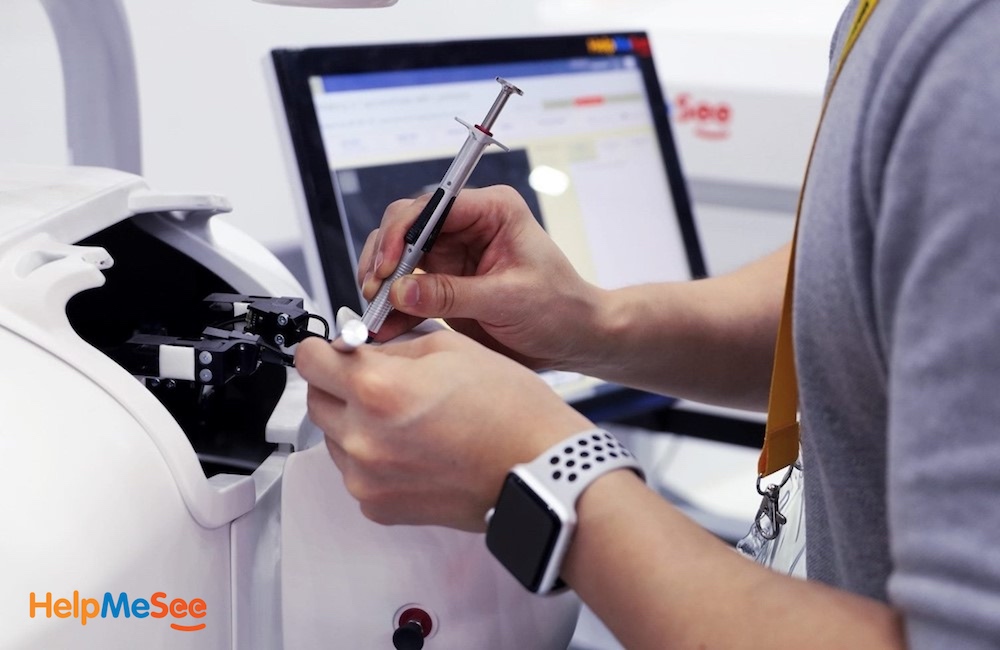The role of medical simulation to hone the skills of surgeons is becoming more prevalent. Surgical simulation is a type of medical simulation focused on surgical skills, knowledge and attitudes acquisition. Surgical education is moving away from the ‘old-school’ method of practicing on patients under the supervision of a seasoned clinician. Simulation allows for the practice of surgical skills in realistic or near-realistic environments without patient risk. There are two broad categories of simulators used in surgical simulation, organic and inorganic. Organic includes animal models and cadavers; inorganic includes task trainers, human patient simulators (also known as high-fidelity simulators), computer-based, and technology-based (AR and VR) systems. A challenge for the use of simulation to build surgical skills is the need for models that appropriately approximate human conditions in a realistic way. With medical simulations, a written scenario provides the educator with a good base on which to impart skills and knowledge. However, for surgical simulations, the case requires a well-written scenario plus costly materials to impart the skills and knowledge.
In a quest to bolster surgical simulation educational opportunities, many programs seek scenarios and tools already developed and vetted. Often these types of scenarios and instructions are not readily available or a challenge to find. This article seeks to assist in the quest to find high-quality surgical simulation scenarios and resources that can be accessed and used free (or close to free) of charge. Included in this article are sites where surgical scenarios, surgical environment simulation scenarios, and instructions to construct inorganic models for surgical skill practice using materials generally readily available in simulation centers and clinical areas can be found.
The Association of PeriOperative Registered Nurses (AORN) offers 16 different scenarios from an active shooter in the peri-operative environment scenario to a fire in the operating room simulation. Each scenario is able to be downloaded – they are well formatted for ease of use and well laid out. Each scenario includes:
- Overview of the situation involved
- Learning objectives for the simulation
- Information for participant preparation and set-up
- A sequence of simulated events with skills checklist
- Algorithm of actions to be taken during the event
- Debriefing questions and actions
- Additional resources specific to each scenario (pictures, test answers, etc)
The American College of Gynecologists and Obstetricians notes surgical simulation scenarios for use for their members as well as for general use. Topics offered include: vaginal hysterectomy (video of a task trainer simulation), basic surgical skills, office surgical procedures, and obstetric surgical skills (log-in required).
MedPro Group has a few scenarios which they refer to as sample scenarios. Among their ‘sample’ download is a well-designed and comprehensive scenario on the anesthesia surgical team. This scenario includes all the usual and expected information you need to run the scenario, but also included are definitions, expected outcomes, debriefing and other resources needed. MedPro’s document is laid out very clearly in a searchable PDF format.
The CanSim website has a nice set of free scenarios from various institutions for use if you are a member. Specific to surgical settings they offer the following scenarios: care of a postoperative patient experiencing a blood transfusion reaction, pediatric post-operative tonsillectomy and adenoidectomy, post-op hip arthroplasty, and post-op infection.
View the HealthySimulation Webinar Operating Room IPE Team Training with Surgical Simulation to learn more!
The Multi-media Manual of Cardio-Thoracic Surgery has an interesting site that walks individuals through homemade task-based simulation drills. These are not scenarios in the traditional sense, but rather instructions on how to build task trainers for various basic skills needed in cardio-thoracic surgery. Their resource videos offer ways to build foundational skills using inexpensive and approachable ways that can be used across settings that include the low-resourced setting. All of the videos are free to access.
Simulation Canada has a simulation scenario exchange. This is a very comprehensive bank of scenarios, with some surgery-focused ones. To access the scenarios, users are asked to create a free account. An overview of the scenarios can be seen without having an account. Most of the scenarios are in English, but some are in French. Housed on this site are a number of scenarios covering a range of topics. Within this library are a number of surgery-related scenarios ranging from post-operative pain management to intraoperative atrial fibrillation and malignant hyperthermia. This collection also includes more nuanced subjects that combine surgical-focused topics with other healthcare considerations. An example of such a scenario is the Culturally Competent Care of a Patient with Postoperative Bleeding.
The SimTech site offers a variety of scenarios that are free and downloadable. Topics specific to surgery: Abdominal trauma, chest and abdominal trauma, pelvic fracture, and penetrating thoracic trauma. Sim Tech also offers an app that can be used to view and download their scenarios. The scenarios are text documents outlining details and include everything from patient simulator settings to debriefing notes.
The American College of Surgeons offers a free curriculum for medical school faculty to teach surgical skills. According to the site, the “simulation-based modules can be used to teach clinical skills ranging from taking a history and physical and signing out a patient to inserting a central venous line with ultrasound guidance. The topics are aligned based on the year during which they are most commonly taught.”
For the tech-savvy, the interactive Medical Simulation Toolkit (iMSTK), is a dynamic open-source platform written in C++11, that can be used to build virtual surgical simulations. Its features include: position-based dynamics, continuous collision detection, smooth particle hydrodynamics, and integrated haptics. iMSTK has cross-platform support, continuous integration, and is compatible with Unity and Unreal. iMSTK provides a wide range of real-time simulation capabilities with a flexible open-source license (Apache 2.0). iMTSK was tested by Moore, et. al. (2023); Frontiers in Virtual Simulation.
Additional Screen-based Free Surgery Simulation Scenarios
There are screen-based simulation programs available too. Torch Surgical offers a free app with over 200 simulations. The app is available on iOS and Android. Cybersight has a library of simulation resources, a few of which are helpful to build eye-related surgical skills. Chatelain et al (2023) speak to the first free virtual lumbar pedicle screws simulator. This resource was studied and demonstrated the ability to improve screw positioning.
Low-Cost / Almost Free Resources
Beyond what has already been mentioned, there are also articles that provide instructions on creating surgical simulation task trainers. An article by Arealis et al (2016) details the recreation of an arthroscopic skills simulator at a low cost. For some with the existing materials this might mean free. Lin et al (2022) describe how to build an adaptable based on materials available Global Surgical Trainer (GlobalSurgBox). This is a low-cost method to provide accessible surgical training. The SpineBox is an option if a program has a 3-D printer is another option to build spinal surgery-related skills.
A Look Towards the Future
On the horizon is Orbit-surgical’s open source resource which will be released as a free and open-source package upon publication and will be free to use. There are also a number of existing technologies that can use their platforms to build out virtual surgical training experiences. These include: Simulation Open Framework Architecture (SOFA) (SOFA, 2022), OpenSurgSim (OSS) (OpenSurgSim, 2022), Obi (Obi, 2022), and the Unity (Unity, 2022) and Unreal (Unrealengine, 2022) game engines.








